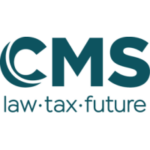-
Does your jurisdiction have a class action or collective redress mechanism? If so, please describe the mechanism and outline the principal sources of law and regulation and its overarching impact on the conduct of class actions in your jurisdiction.
Class actions are a common mechanism in the United States for plaintiffs to bring claims collectively that would otherwise be too expensive or impractical to be brought on an individual basis. To bring a class action in a U.S. federal court, a representative class member files a complaint on behalf of a putative class of similarly situated persons as described therein. The principal source of law governing class actions in federal court is Rule 23 of Federal Rules of Civil Procedure and judicial precedent applying that Rule. For a case to proceed as a class action on behalf of the defined members of the class, the court must certify the class under the standards of Rule 23, discussed in more detail below in Question 17. If a class is certified, any judgment will be binding on all class members, but members may have the ability to opt-out after the class is certified (and for certain causes of action, plaintiffs may be required to opt-in as discussed below in Question 16).
Most states provide for class actions as well; Mississippi and Virginia are often cited as the only states in which class actions are not available under state law, but allows employees to bring collective actions related to overtime wages. Many states, including Delaware, Florida, and Oklahoma allow “mass actions” or “collective actions” in addition to class actions, as do certain federal statutes. The requirements to bring a mass or collective action vary from state to state, but they generally differ from class actions in that all plaintiffs are parties and participate in the proceedings as individuals, with the right to have counsel of their own choosing.
-
What is the history of the development of the class actions/collective redress mechanism and its policy basis in your jurisdiction?
Early American jurisprudence incorporated the English “Necessary Party Rule,” articulated by Justice Joseph Story in West vs. Randall: “it is a general rule in equity, that all persons materially interested, either as plaintiffs or defendants in the subject matter of the bill ought to be made parties to the suit, however numerous they may be.” Essentially, the rule required all interested persons to be joined individually as actual parties. When a precursor to the modern Federal Rules of Civil Procedure, the Federal Rules of Equity, was adopted in 1843, Rule of Equity 48 relaxed the Necessary Party Rule by permitting courts to proceed without all affected parties when “the parties on either side [were] very numerous, and [could not], without manifest inconvenience and delays in the suit, be all brought before” the court, as long as there were “sufficient parties before it to represent all the adverse interest of the plaintiffs and defendants.” Any judgments did not bind absent parties, however.
In 1912, Rule 38 of the Rules of Equity replaced prior Rule 48 and permitted “one or more [to] sue or defend for the whole” when “the question [was] one of common or general interest to many persons constituting a class so numerous as to make it impracticable to bring them all before the Court.” Unlike the prior Rule 48, Rule 38 allowed judgments to bind absent parties.
The Federal Rules of Civil Procedure codified the principles of Equity Rule 38 in Rule 23 when they were adopted in 1938. Because the Federal Rules of Civil Procedure merged the courts of law and equity, Rule 23 permitted class actions for damages for the first time. Rule 23 originally provided:
[A] representative suit was authorized where the right to enforcement for or against the class was: (1) joint, or common, or secondary in the sense that the owner of a primary right refuses to enforce that right and a member of the class thereby becomes entitled to enforce it; (2) several, and the object of the action is the adjudication of claims which do or may affect specific property involved in the action; or (3) several, and there is a common question of law or fact affecting the several rights and a common relief is sought.
That formulation proved to be too abstract and thus unworkable, leading to the amendment of Rule 23 in 1966. The 1966 amendment was intended to describe in more practical terms the grounds for maintaining a class. While Rule 23 has been amended in various respects since then, the 1966 amendments created the basic regime that exists today, as discussed further in response to Question 17.
The policy basis for class actions in the United States is two-fold. First, class actions are designed to make litigation involving numerous injured parties more manageable by reducing the number of parties who must actually appear before the court. Second, class actions are designed to allow claims to be brought even if the relatively low value of an individual claim would otherwise not justify the expenditure required to litigate a case through trial.
-
What is the frequency of class actions brought in your jurisdiction, in terms of number of cases over the years and/or comparison to other types of litigation?
Class actions are a common feature of U.S. litigation. According to one litigation-tracking database, of 201,121 new cases filed in federal court in 2024, 11,050 were putative class actions (approximately 5.5%). By comparison, in 2023 and 2022, respectively, 10,872 (3.7%) and 9,971 (5%) of cases filed in federal court were putative class actions.
-
Are there certain courts or types of claims that are most prevalent (for example competition vs commercial litigation generally)?
Of the 11,050 putative class actions filed in federal court in 2024, 1,614 (15%) were brought in the U.S. District Court for the Southern District of New York, followed by 1,135 (10%) brought in the District Court for the Central District of California.
The majority of those cases involved consumer protection issues (6,100 cases, or 55%), followed by civil rights (1,993, or 18%) and employment issues (983, or 9%).
-
What is the definition of 'class action' or 'collective redress' relevant to your jurisdiction?
In general, a class action is a civil action in which one or more plaintiffs sue as representatives of a larger group of individuals (i.e., the “class”) who all share common legal and/or factual claims. Any civil action that meets the requirements of Federal Rule of Civil Procedure 23, described in further detail in response to Question 17, can proceed as a class action. If the court certifies the action as meeting the requirements Rule 23, the outcome of the action binds all members of the class other than those who have individually and affirmatively opted out of the class.
-
What are the general 'triggers' for commencement of a class action or collective redress in your jurisdiction from a factual perspective?
Any conduct that injures or threatens to injure a sufficiently large number of persons can trigger a class action. Circumstances that trigger class actions often include multiple injuries caused by a single source, such as a defective product that injures thousands of consumers; systematic misconduct or a uniform policy, such as illegal pricing or hiring practices; or a violation of a statute that affect the rights of many, such as a privacy breach. More specific examples of the types of conduct that present the problems that class actions are designed to address are listed in response to Question 8.
-
How do class actions or collective redress proceedings typically interact with regulatory enforcement findings? e.g. competition or financial regulators?
Regulatory enforcement proceedings frequently serve as a catalyst for class action litigation in the United States. Such “follow-on” class actions are often filed on the heels of the public disclosure of a regulatory investigation or governmental enforcement action (civil or criminal), with a representative plaintiff asserting claims incorporating facts alleged in a plea, indictment, complaint, or other statement disclosing the prior proceeding. Common types of follow-on cases include civil actions following (or during) criminal antitrust investigations or prosecutions. When class actions are initiated during the course of a criminal investigation, the U.S. Department of Justice commonly seeks to stay civil discovery until the completion of the investigation and related prosecutions. Under the Antitrust Criminal Penalty Enhancement & Reform Act (“ACPERA”), defendants that have been granted leniency under the Department of Justice Antitrust Division’s Leniency Program can avoid treble antitrust damages and joint and several liability if they timely provide to civil plaintiffs “satisfactory cooperation.”
Similarly, class action litigation may lead to government enforcement efforts. Plaintiffs also may contact regulators in the midst of class action litigation to try to spur concurrent investigations, and enforcement agencies have opened investigations based on what is disclosed in the course of a public class action. Whatever the impetus for a governmental enforcement action, private plaintiffs inevitably will seek to make use of guilty pleas, criminal convictions, leniency applications, and related cooperation obligations in subsequent civil litigation, subject to the applicable rules of evidence and court rulings as to admissibility.
-
What types of conduct and causes of action can be relied upon as the basis for a class action or collective redress mechanism?
As long as the requirements for certifying a class discussed in Question 17 are met, and the specific claim is not statutorily or otherwise barred, any cognizable legal claim may be asserted on a class-wide basis. Common class action claims cover a broad range of subject matters and causes of action. Cases that frequently present the problems that class actions are designed to address—i.e., cases with a large number of injured parties and/or claims that likely would not otherwise be brought because no single plaintiff has a claim large enough to warrant proceeding individually—include product liability, mass torts, consumer fraud, antitrust, securities fraud, civil rights, privacy, data breaches, and employment discrimination claims.
-
Are there any limitations of types of claims that may be brought on a collective basis?
The federal Securities Litigation Uniform Standards Act of 1998 (“SLUSA”) bars claims for securities fraud under state law from being brought as class actions where (1) the securities involved are traded nationally and are listed on a regulated national exchange and (2) damages are sought on behalf of more than 50 people. This is to prevent plaintiffs from circumventing the federal restrictions on securities fraud class actions, such as heightened pleading standards. In addition, some states may bar class actions for certain types of claims entirely, such as certain types of taxpayer suits, or may impose procedural limitations on class actions, such as first requiring exhaustion of administrative remedies or requiring an enforcing authority to first make a finding of fraud or deception under certain state consumer-protection statutes.
Potential plaintiffs, such as consumers or employees, can waive their right to bring class actions in end-user, employment, consumer finance, and similar types of contracts. The Supreme Court of the United States has upheld mandatory class action waivers in employment-related arbitration agreements and consumer agreements requiring individual arbitration of claims. There are, however, exceptions and other limits on the enforceability of class action waivers. For example, the Ending Forced Arbitration of Sexual Assault and Sexual Harassment Act of 2021 voids class action waivers for claims alleging sexual assault or sexual harassment, and there was a recent proposal in Congress to expand that to human trafficking claims. In addition, courts may find certain contractual class action waivers to be unenforceable, e.g., if the surrounding circumstances render them unconscionable or if they would infringe statutory rights.
-
Who may bring class action or collective redress proceeding? (e.g. qualified entities, consumers etc)
Class actions generally are not limited to particular types of plaintiffs. As long as the putative class meets the criteria discussed in Question 17, and jurisdictional and other requirements applicable to all cases are met, a case may proceed as a class action on behalf of consumers and/or businesses and other types of organizations.
-
Are there any limits on the nationality or domicile of claimants in class actions or collective redress proceedings?
Federal Rule of Civil Procedure 23 does not expressly limit the participation of non-U.S. citizens from participating in class actions as absent class members or even as putative class representatives. The requirements of commonality, typicality, adequacy, and superiority and predominance discussed in Question 17, however, may pose particular challenges to the certification of classes with members, or representatives, who are non-citizens. Differences in the circumstances giving rise to claims brought by citizens and non-citizens may result in a failure to meet the commonality and typicality requirements of 23(a). For example, if a choice of law analysis results in different laws governing claims brought by U.S. citizen class members and foreign class members, the proposed class may fail to meet the typicality requirement of Rule 23(a).
In addition, foreign class members create risks of re-litigation if the foreign jurisdiction does not recognize the U.S. court’s judgment. Thus, some courts have declined to certify a class that includes foreign citizens on the ground that it does not meet the superiority requirement of Rule 23(b)(3). Similarly, the availability of an adequate remedy in an alternative forum may cause a putative class that includes foreign citizens to fail the superiority requirement based on the principle of forum non conveniens. Likewise, logistical difficulties, such as difficulty in providing notice, also might cause a putative class that includes foreign citizens to fail the superiority requirement.
-
Are there any limitations on size or type of class?
Federal Rule of Civil Procedure 23 requires that a class include enough members that joining each of them individually would be impracticable, but there is no upper limit on the size of a class. Class sizes for class actions brought pursuant to Rule 23 can and have consisted of hundreds to millions of members. The Federal Rules do not limit class actions to any type of class, so long as the class meets the criteria discussed in Question 17. When considering whether the size of the proposed class is too small to certify, courts look at factors like judicial economy, geographic location of members, financial resources of members, and size of the individual claims. Courts—including the United States Supreme Court—have noted that classes of fewer than 20 members are likely too small to meet Rule 23(a)(1)’s numerosity requirement.
-
Are there any requirements or prohibitions in sourcing this class?
Attorneys attempting to source plaintiffs for a class action must adhere to all of the ethics rules governing communications with non-clients, including rules regarding solicitation of clients. With certain exceptions, attorneys are prohibited from soliciting potential clients, including class plaintiffs, in person. Written solicitation of class plaintiffs is generally permissible as long as the communications are clearly labelled as advertising material. Communications also may not be misleading, abusive, or coercive. Courts have found communications to be misleading or otherwise improper when they present allegations as facts, create a false sense of urgency with arbitrary deadlines to retain class counsel, or fail to provide an accurate and impartial explanation of the procedures and status of a class action, among other things.
-
Which courts deal with class actions or collective redress proceedings?
Class actions may be brought in any federal district court that has personal jurisdiction over the defendant(s) and subject matter jurisdiction over the controversy. Subject matter jurisdiction is discussed in Question 15. Similarly, class and/or other forms of collective actions may be brought in state courts of general jurisdiction as long as state-specific requirements are met, the court has subject matter jurisdiction, and the defendant is subject to personal jurisdiction in that court—i.e., the defendant is an individual who lives or works, or is an entity incorporated, headquartered, or doing business related to the claim asserted, in that state.
-
Are there any jurisdictional obstacles to class actions or collective redress proceedings?
Class actions are largely subject to the same jurisdictional rules as individual actions. Representative plaintiffs may bring a putative class action in federal court, or the defendants may remove a putative class action from state court to federal court, if the court has subject matter jurisdiction or can meet the requirements of the Class Action Fairness Act of 2005 (“CAFA”).
Federal subject matter jurisdiction typically is based on either:
- Federal question jurisdiction: Federal question jurisdiction exists when the representative plaintiff asserts a claim under federal law, such as alleged antitrust violations under the Sherman Act; or
- Diversity jurisdiction: Diversity jurisdiction exists when the representative plaintiffs and all named defendants are citizens of different states, or citizens of a U.S. state and citizens of a foreign state, and the amount in controversy with respect to each separately named class representative is at least $75,000.
In addition, CAFA provides for federal jurisdiction when there are at least 100 plaintiffs in the putative class, at least one plaintiff is diverse from at least one defendant, and the aggregate sum of the plaintiffs’ claims exceeds $5 million. CAFA expanded defendants’ ability to litigate class actions in federal rather than state court.
As courts of general jurisdiction, state courts generally may preside over class actions so long as they are authorized under the state’s procedural rules. See supra Question 1. In addition, the court, whether federal or state, also must have personal jurisdiction over each defendant.
-
Does your jurisdiction adopt an “opt in” or “opt out” mechanism?
Most class actions in the U.S. federal courts are “opt out” proceedings. Federal Rule of Civil Procedure 23(b) (discussed further in Question 17) provides for three types of class actions. Rule 23(b)(3) applies when questions of law or fact common to the class predominate over the questions affecting only individual members. When a class is certified under Rule 23(b)(3), class members have a right to receive notice of class certification and an opportunity to opt out so that they can pursue their claims individually if they wish.
By contrast, Rule 23(b)(1) applies when separate proceedings would create a risk of inconsistent rulings that would establish incompatible standards of conduct by the defendant, or when individual proceedings would be dispositive of nonparties’ interests or impair nonparties’ ability to defend those interests. Rule 23(b)(2) typically applies when the representative plaintiff seeks injunctive or declaratory relief that would affect the class as a whole. Classes certified under either of these rules provide relief to and bind class members without any requirement to opt in and typically provide no right to opt out.
Opt-in requirements may be imposed by statute for certain types of claims. For example, the Age Discrimination in Employment Act and the Fair Labor Standards Act both require plaintiffs to file written consents to join the action. These statutory claims generally are referred to as “collective actions” as opposed to “class actions.”
-
What is required (i.e. procedural formalities) in order to start a class action or collective redress claim?
A putative class action is started like any other lawsuit, with a complaint filed in a court with apparent jurisdiction over the parties and claims. With respect to federal class actions, the court must certify the class under Federal Rule of Civil Procedure 23 for the case to proceed as a class action rather than on behalf of only the named plaintiff(s). The class certification process typically begins with a motion for class certification filed by the representative plaintiff(s), often after at least some discovery is conducted, as discussed in Question 1. The court must undertake a “rigorous analysis” to determine whether the representative plaintiffs have proven that their proposed class meets the requirements of Rule 23, which may involve an evidentiary hearing. Wal-Mart Stores, Inc. v. Dukes, 564 U.S. 338, 350 (2011).
As an initial matter, Rule 23 provides that certification orders “must define the class.” Fed. R. Civ. P. 23(c)(1)(B). Some courts have held this to implicitly require the putative class representative to show that membership in the proposed class is “ascertainable”; i.e., that individual class members can be identified by reference to objective criteria separate from the mere fact of the alleged harm. Putative class representatives also must prove that the proposed class meets all of the requirements set forth in Fed. R. Civ. P. 23(a):
- Numerosity (Rule 23(a)(1)): The class must include so many members that including each of them as a separate plaintiff would be impracticable. Some courts have stated that 40 members is the minimum threshold for meeting the numerosity requirement. On the other hand, where a case involves hundreds of class members or more, numerosity is typically assumed and uncontested. The party seeking class certification need not provide the exact number of class members at the class certification stage; a good-faith estimate generally will suffice.
- Commonality (Rule 23(a)(2)): There must be at least one issue of law or fact common to the class. Speaking generally, even a single common issue is sufficient to satisfy this requirement. While the common issue need not be dispositive of the case, it must be central to it. The common issue also does not need to apply to all class members, but it must apply to most.
- Typicality (Rule 23(a)(3)): The claims of the representative plaintiff(s) must be typical of those of the absent class members. That is, they must arise from the same facts and pursue the same legal theories as those being asserted on behalf of absent class members, although they generally need not be identical to those of all absent class members.
- Adequacy (Rule 23(a)(4)): The interests of the absent class members must be adequately represented such that it is fair to bind absent class members to the judgment. This generally requires both that the representative plaintiff(s) has no significant conflicts of interest with the absent class members and that the attorneys representing the class have sufficient experience with class actions and the claims at issue.
In addition to meeting each of the requirements of Rule 23(a), the representative plaintiff must show that the class meets at least one of the criteria set forth in Rule 23(b):
- Rule 23(b)(1): Separate actions by the individual class members would either risk establishing incompatible standards against the party being sued, or would be dispositive of absent class members’ interests (such as cases addressing a utility’s practices with respect to all its customers) or substantially impair their ability to protect those interests (such as “limited fund” cases, in which a defendant’s assets are insufficient to satisfy all individual claims, which would leave later-filing plaintiffs empty-handed).
- Rule 23(b)(2): The class seeks declaratory or injunctive relief where the party opposing the class “has acted or refused to act on grounds generally applicable to the class,” such as civil rights cases arising out of discrimination against a particular group.
- Rule 23(b)(3): Questions of law or fact common to the class predominate over the questions affecting only individual members, as determined by the court, and adjudicating the matter on a class-wide basis will be “superior to other available methods.”
The requirements for bringing class actions in most state courts generally mirror those of bringing class actions in federal courts, but there are exceptions, such as in California.
-
What other mandatory procedural requirements apply to these types of matters?
If a court determines that a proposed class meets the requirements of Federal Rule of Civil Procedure 23, the court must issue an order that defines the class, certifies the class, and appoints class counsel. For classes certified under Rule 23(b)(3), Rule 23(c) requires that individual class members must then be provided with notice explaining (1) the nature of the action, the definition of the certified class, and the class claims and defenses; (2) that the class members may opt out of the class; and (3) the process for opting out of the class. If a judgment (or settlement) is awarded in favor of a class, a claims administrator will administer a process for class members to provide proof of their membership in the class and claim their portion of any damages award.
Individual federal courts and judges often have local rules that apply to actions before them, including class actions. For example, a number of local rules require motions for class certification to be filed within a certain number of days after service of the complaint, while others require class action complaints to contain “Class Action” in the title and to contain certain allegations relating to the requirements of Federal Rule of Procedure 23.
-
Are normal civil procedure rules applied to these proceedings or a special set of rules adopted for this purpose?
The Federal Rules of Civil Procedure govern all civil proceedings in federal courts, including class action proceedings. Rule 23 lays out the requirements and procedures for class actions in particular, as discussed in response to Question 17. Likewise, the same rules governing civil actions in most state courts also generally apply to class actions brought in the same courts, often with particular requirements and procedures for class actions. California is the main exception, as certain requirements for class actions—such as for class certification—are laid out in caselaw and not by statute.
-
How long do these cases typically run for?
As of December 31, 2024, class actions took a median of 185 days, or just over 6 months, from filing to resolution of any kind in federal courts. The small percentage that have settled (6%) take a median of 814 days (over 2 years) to reach settlement, and the even smaller percentage that go to trial (0.4%) take a median of 950 days (over 2 and a half years). It is not uncommon, however, for cases to run for 5-10 years or more.
-
What remedies are available to claimants in class action or collective redress proceedings?
Class plaintiffs can sue for monetary damages as well as injunctive relief, declaratory relief, restitution, and other equitable remedies.
-
Are punitive or exemplary damages available for class actions or collective redress proceedings?
Nothing in the Federal Rules of Civil Procedure prohibits punitive damages in class actions, but courts generally disfavor them. Punitive damages are available only if the substantive law underlying the causes of action asserted would allow punitive damages for an individual claim. In addition, differences in the availability of punitive damages under applicable state laws can preclude certification of nationwide punitive damages classes.
-
Is a judge or multiple judges assigned to these cases?
As discussed in response to Question 19, other than the procedural requirements for certifying a class under Federal Rule of Civil Procedure 23 and similar state-court rules discussed in response to Question 17, the same procedural rules that apply to civil actions also apply to class actions. There are no special courts, judges, or set of procedural rules specific to class actions. Just as in any civil action, therefore, single judges are assigned to class actions. In federal court, “magistrate judges” may be assigned to manage discovery, the case schedule, and other non-dispositive matters in civil actions, including class actions.
-
Are class actions or collective redress proceedings subject to juries? If so, what is the role of juries?
Class actions are generally tried before juries to the same extent as individual actions. Thus, claims for damages, i.e., “legal” claims, are generally tried before juries, while claims for injunctive relief, i.e., “equitable” claims, are tried before judges. A party must make a jury demand for any claim to be tried before a jury, typically at the outset of the case.
-
What is the measure of damages for class actions or collective redress proceedings?
The measure of damages in a class action varies depending on the type of claim and injury asserted in the case. For example, if class members paid a one-time flat fee later found to be unlawful, the damages owed to each class member might simply be a refund of the fee, with each class member receiving the same amount. Similarly, if class members prove that they overpaid for each unit of a product they purchased, those who bought multiple units might be entitled to larger awards than class members that bought only one unit. Calculating the damages owed to each individual class member can be quite complex. In such cases, the putative class must generally be able to demonstrate that there is a single method that will allow damages to be reliably measured and quantified for each individual class member.
There are several methods by which class-wide damages may be calculated. For example, an expert witness may utilize a mathematical formula or economic model based on the facts of the case and/or the defendant’s records. In other cases, an expert witness might present representative evidence demonstrating the damages of a typical class member, which can then be used to approximate the damages suffered by the class as a whole. In complex cases, courts may bifurcate proceedings into a liability phase and a damages phase and/or appoint a special master to assist in the allocation of damages if liability is established.
-
Is there any mechanism for the collective settlement of class actions or collective redress proceedings?
Federal Rule of Civil Procedure 23(e) provides that “claims, issues, or defenses of a certified class—or a class proposed to be certified for purposes of settlement—may be settled, voluntarily dismissed, or compromised only with the court’s approval.” A class action may be certified specifically for the purposes of settlement, or a class may be certified in order to proceed to trial and later settle. Settlement classes can be defined differently, including more broadly, than the putative class defined in the complaint. While a settlement class must still technically meet the requirements of Rule 23 discussed in Question 17, in practice courts often take a less rigorous approach to class certification in the settlement context.
-
Is there any judicial oversight for settlements of class actions or collective redress mechanisms?
As noted above, Federal Rule of Civil Procedure 23(e) provides that any class action settlement must be approved by the court. Approval is a three-step process. First, the court must determine whether to grant preliminary approval of the proposed class and settlement. Second, if preliminary approval is granted, notice must be given to all class members who would be bound by the proposed settlement, and the court must hold a fairness hearing, where class members must have an opportunity to object. Fed. R. Civ. P. 23(e)(1). In Rule 23(b)(3) cases, class members must also have an opportunity to opt out. If Rule 23(b)(3) class members already were given the opportunity to opt out at the class certification stage, the court nevertheless may, in its discretion, provide a second opportunity to opt out. Fed. R. Civ. P. 23(e)(4). The court may direct that notice of this second opportunity to opt out be sent along with notice of the settlement and fairness hearing, or the court may require that it be sent after the fairness hearing. Third, the court must determine whether to grant final approval, which requires the court to conclude that the settlement is “fair, reasonable, and adequate.” The court will consider whether the class representative and class counsel have adequately represented the class, the proposal was negotiated at arm’s length, the relief provided to the class is adequate, and the proposal treats class members equitably relative to each other. Fed. R. Civ. P. 23(e)(2).
-
What are the top three emerging business risks that are the focus of class action or collective redress litigation?
Artificial intelligence (“AI”) is an emerging focus of class action litigation, as interest and investment in AI continues to rise. Investors have claimed that companies have engaged in so-called “AI washing” by misleading the public about topics such as their use of AI and the ability of AI to spur company growth. Fifteen such cases were filed in federal court in 2024, double the number filed in 2023.
Second, data breaches and privacy violations are likely to generate increasing class action risk. When hackers access consumers’ private or confidential information held by private companies, affected parties may seek to hold those companies responsible for insufficiently protecting data from threats. A relatively recent class action following a data breach settled for over $500 million, with potentially an additional $2 billion in payments to come. Consumers also can seek redress for companies’ data-gathering protocols, despite potentially legitimate business purposes: an appellate court recently allowed a class action to proceed that alleged that the defendant collected identifying information about minor users without first obtaining their consent. The dollar amount of settlements for class actions stemming from data breaches increased in 2024 over 2023. This area will likely continue to present increasing risk as cyberthreats become more sophisticated and widespread and plaintiffs push the envelope of damages theories.
Lastly, antitrust claims continue to be a significant area for litigation risk. Regulators continue to vigorously investigate and enforce federal and state antitrust laws, increasing the likelihood that class actions will be brought based on facts and/or violations disclosed during enforcement actions, as discussed further in Question 7. Such “follow-on” class actions are expected to continue to increase. Pricing algorithms and information sharing have been a focus of antitrust scrutiny recently and thus continue to present class action risk.
-
What trends in litigation are evident in the last three years in your jurisdiction in respect of class actions?
The most prominent and pervasive trend with respect to class actions in the United States is their increasing number, size, and complexity, with the number of class actions filed continuing to grow each year. The size of class settlements and awards continues to grow as well, with multiple billion-dollar settlements over the last three years.
Class actions also have increasingly prompted follow-on regulatory action. As discussed in response to Question 7, regulatory agencies often open investigations or bring enforcement actions based on allegations made in class actions, including after Plaintiffs’ counsel contact regulators regarding the allegations.
-
Where do you foresee the most significant legal development in the next 12 months in respect of collective redress and class actions?
The United States Supreme Court is poised to decide whether a class may be certified if some individual absent class members have not suffered any injury and thus do not have “standing” under Article III of the Constitution. Currently, the Ninth Circuit permits a class to be certified regardless of the number of uninjured class members as long as a central issue in the case is common to the putative class and predominates. Other Circuits have held that a class can contain no more than a “de minimis” number of uninjured class members, while yet others have held that a class may not be certified if any members were not injured. Because class certification can, for practical purposes, be dispositive in many actions—as the injury to any single class member often does not warrant continuing with the action individually—any additional defense to certification would be significant.
-
Are class actions or collective redress proceedings being brought for ‘ESG’ matters? If so, how are those claims being framed?
ESG class actions continue to arise as claims alleging either harmful effects of ESG policies or some defect in a disclosure or statement relating to ESG matters.1 An example of the former is a case filed in June 2023 by a putative class of employees of American Airlines claiming that the airline’s ESG-related investment policy resulted in lower returns for their retirement fund. In January of this year, the court held that the airline breached certain fiduciary duties by investing employees’ retirement assets towards ESG objectives. An example of the latter is a case filed in May 2023 by a putative class of purchasers of Nike’s “Sustainability” Collection Products claiming that Nike’s products are not as environmentally friendly as the clothing and footwear manufacturer claims.
In 2022, the United States Securities & Exchange Commission proposed three new rules that could provide the basis for more such class actions in the future. These rules govern climate-related disclosures, the naming of funds after ESG matters, and ESG disclosures generally. If the rules are finalized, certain companies would be required to make additional disclosures concerning ESG matters. Following a series of court challenges by states and private litigants, however, the SEC under the new Trump administration informed the court presiding over the consolidated cases that it will no longer defend the disclosure rules.
Footnote(s):
1 “ESG” refers to Environmental, Social, and Governance.
-
Are there any proposals for the reform of class actions or collective redress proceedings? If so, what are those proposals?
No significant proposals to reform class actions currently are being considered by Congress or the Advisory Committee on Civil Rules, which is a standing committee established by the Supreme Court to study and recommend changes to the Federal Rules of Civil Procedure.
The Forced Arbitration Injustice Repeal (FAIR) Act would prohibit waivers of the right to bring class actions in certain areas, including employment and antitrust. It has been passed in the House of Representatives twice in the last few years but has never made it to a vote in the Senate.
United States: Class Actions
This country-specific Q&A provides an overview of Class Actions laws and regulations applicable in United States.
-
Does your jurisdiction have a class action or collective redress mechanism? If so, please describe the mechanism and outline the principal sources of law and regulation and its overarching impact on the conduct of class actions in your jurisdiction.
-
What is the history of the development of the class actions/collective redress mechanism and its policy basis in your jurisdiction?
-
What is the frequency of class actions brought in your jurisdiction, in terms of number of cases over the years and/or comparison to other types of litigation?
-
Are there certain courts or types of claims that are most prevalent (for example competition vs commercial litigation generally)?
-
What is the definition of 'class action' or 'collective redress' relevant to your jurisdiction?
-
What are the general 'triggers' for commencement of a class action or collective redress in your jurisdiction from a factual perspective?
-
How do class actions or collective redress proceedings typically interact with regulatory enforcement findings? e.g. competition or financial regulators?
-
What types of conduct and causes of action can be relied upon as the basis for a class action or collective redress mechanism?
-
Are there any limitations of types of claims that may be brought on a collective basis?
-
Who may bring class action or collective redress proceeding? (e.g. qualified entities, consumers etc)
-
Are there any limits on the nationality or domicile of claimants in class actions or collective redress proceedings?
-
Are there any limitations on size or type of class?
-
Are there any requirements or prohibitions in sourcing this class?
-
Which courts deal with class actions or collective redress proceedings?
-
Are there any jurisdictional obstacles to class actions or collective redress proceedings?
-
Does your jurisdiction adopt an “opt in” or “opt out” mechanism?
-
What is required (i.e. procedural formalities) in order to start a class action or collective redress claim?
-
What other mandatory procedural requirements apply to these types of matters?
-
Are normal civil procedure rules applied to these proceedings or a special set of rules adopted for this purpose?
-
How long do these cases typically run for?
-
What remedies are available to claimants in class action or collective redress proceedings?
-
Are punitive or exemplary damages available for class actions or collective redress proceedings?
-
Is a judge or multiple judges assigned to these cases?
-
Are class actions or collective redress proceedings subject to juries? If so, what is the role of juries?
-
What is the measure of damages for class actions or collective redress proceedings?
-
Is there any mechanism for the collective settlement of class actions or collective redress proceedings?
-
Is there any judicial oversight for settlements of class actions or collective redress mechanisms?
-
What are the top three emerging business risks that are the focus of class action or collective redress litigation?
-
What trends in litigation are evident in the last three years in your jurisdiction in respect of class actions?
-
Where do you foresee the most significant legal development in the next 12 months in respect of collective redress and class actions?
-
Are class actions or collective redress proceedings being brought for ‘ESG’ matters? If so, how are those claims being framed?
-
Are there any proposals for the reform of class actions or collective redress proceedings? If so, what are those proposals?





















